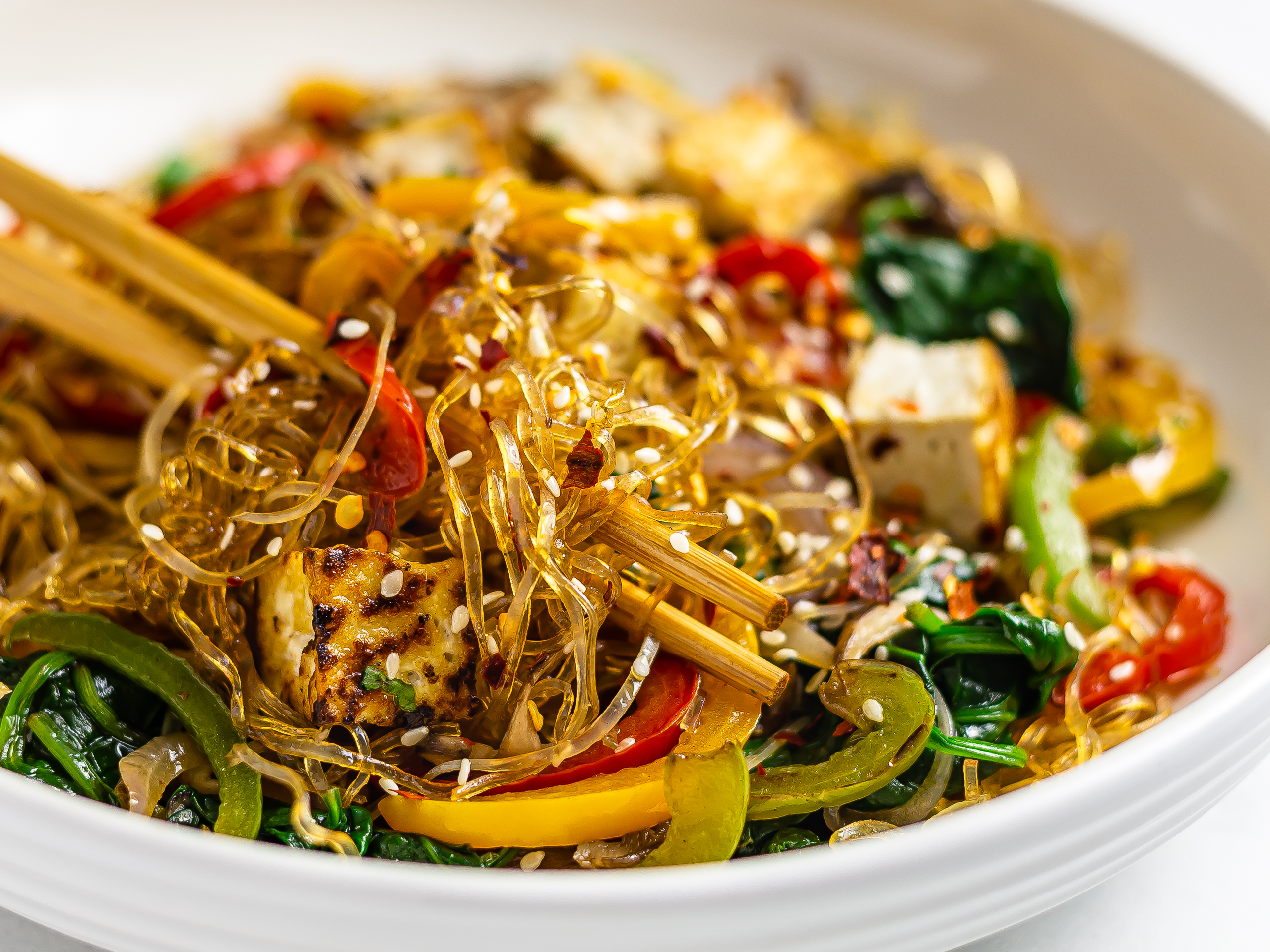Japchae is a veggie stir-fry made with glass noodles (dangmyeon 당면), very popular in Korea, especially during festivities. While the classic version includes meat, like beef and pork, and sometimes eggs, we made our vegan, with only plant-based ingredients.
Japchae means mixed vegetables, but don't let the simple name fool you! This recipe is easy to make, but it's rich, flavourful and so very colourful. It is truly worthy of celebration and will bring joy to your table (and belly), as it did ours!
The veggies we used are onions, a colourful selection of peppers, spinach, and mushrooms. We followed the advice of Korean cookbooks that suggest stir-frying veggies separately, to retain their isolated colour and flavour. It is indeed a good tip, but if you are low on time, feel free to stir-fry everything together.
The other cool thing about this recipe is the glass (cellophane) noodles. We loved them in our glass noodle pad thai and wanted to use them again in a recipe you would like as well. We think we hit the mark with this one!
There are many varieties of glass noodles. We suggest you use the one made from sweet potato starch, as it is the one traditionally used in Japchae. We also tried mungbean and arrowroot glass noodles, and they were yummy too.
A nice bowl of these Korean stir-fried noodles makes a balanced meal under 500 calories and provides 30% of your RDI for fibres, 34% RDI for proteins, and only 8% RDI for saturated fats. Scroll below to discover the other ingredients we used and follow our simple steps to get this done!
And if you're in the mood for more stir-fry recipes with tofu, check out this Thai tofu recipe with cashews and red peppers — utterly delicious!
Are Japchae noodles low carb and keto-friendly?
Virtually all noodle dishes, including this Japchae recipe, are not low in carbs. A typical bowl of noodles provides at least 40g of net carbs, which means they're not suitable for those following a keto diet where 50g is the entire daily carb allowance.
Classic noodles are made with flour, either wheat or rice flour, while glass noodles with starch extracted from potatoes, mung beans, or tapioca.
Therefore, if you want to make this stir-fry keto-friendly, you can swap noodles with low-carb alternatives, like:
Shirataki noodles, a type of Japanese noodle made from konjac yam
Zucchini noodles
Kelp noodles
Edamame noodles
Homemade egg noodles, swap flour with almond flour and add turmeric for colour
Can I have Japchae stir-fry if I am vegan?
While the classic japchae recipe includes meat like beef and pork and sometimes eggs, our recipe is 100% plant-based.
To make it vegan, we replaced meat with tofu, diced into bite-sized cubes and stir-fried until crispy. Tofu, like other soy-based products, is also a source of complete plant-based proteins, meaning it provides all the nine essential amino acids.
Is the classic Japchae recipe gluten-free?
Yes, this Korean-style stir-fry is traditionally prepared with sweet potato glass noodles, also known as dangmyeon. Being made from the starch of potatoes, these noodles are gluten-free and thus suitable for those following a no-gluten diet.
By the way, with our free Smart Search tool, you can easily filter recipes according to your dietary needs, including food allergies. Check it out here!
Can I reheat stir-fried noodles?
If you have any leftover noodles, you can store them in the fridge for up to three days and then reheat them for a quick midweek meal.
They will taste even better as the noodles will have time to soak in all the flavours. Reheat the stir-fried noodles in a non-stick skillet with a dash of vegetable oil. Fry them for a few minutes or until warm and fragrant and enjoy.
Ingredients
| Glass Noodles | 220 g |
| Rapeseed Oil | 1 tbsp |
| Red Onion | 1 |
| Yellow Peppers | 1 |
| Green Peppers | 1 |
| Red Peppers | 1 |
| Shiitake Mushrooms | 350 g |
| Spinach | 160 g |
| Firm Tofu | 400 g |
| Gluten-Free Soy Sauce | 4 tbsp |
| Maple Syrup | 1 tbsp |
| Sesame Oil | 1 tbsp |
| Rice Vinegar | 1 tbsp |
| Chilli Flakes | to taste |
| Sesame Seeds | to taste |
Step 1
Soak the glass noodles in a bowl with warm water for 10-15 minutes.
Then drain them well and keep them aside while you stir-fry the vegetables.
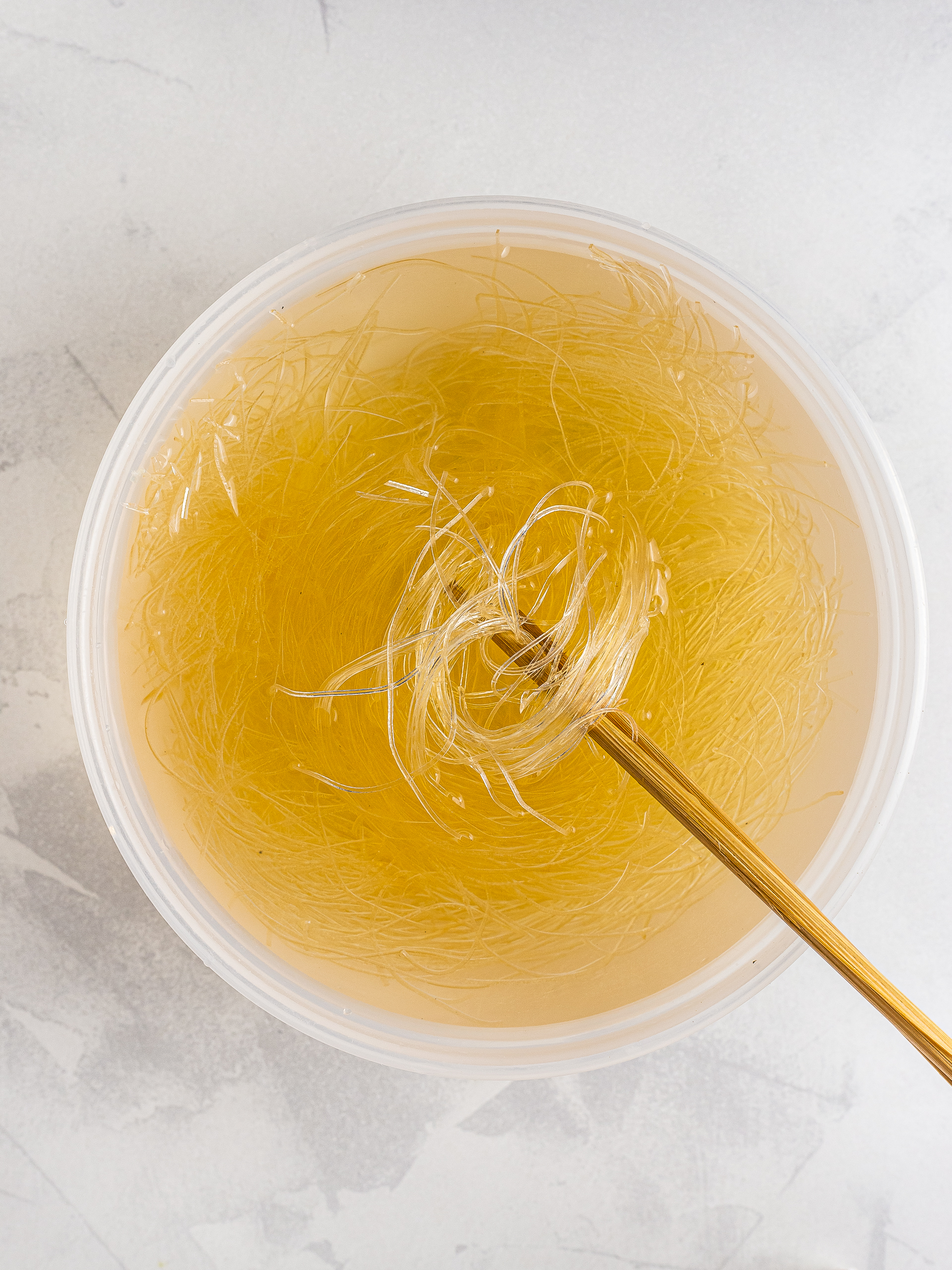
Step 2
Thinly slice the onions, peppers, and mushrooms and dice the tofu into bite-sized cubes.
Heat the rapeseed oil in a wok or large skillet and stir-fry the prepared vegetables, spinach, and tofu.
You can stir-fry each ingredient separately in little oil starting from the lightest to the darkest coloured one, according to the classic recipe, or cook them all in one go if you're short on time.
Fry the vegetables for about 4-6 minutes, just enough for them to soften but still stay crunchy. For the tofu instead, aim to get the cubes nicely seared and crispy on all sides.
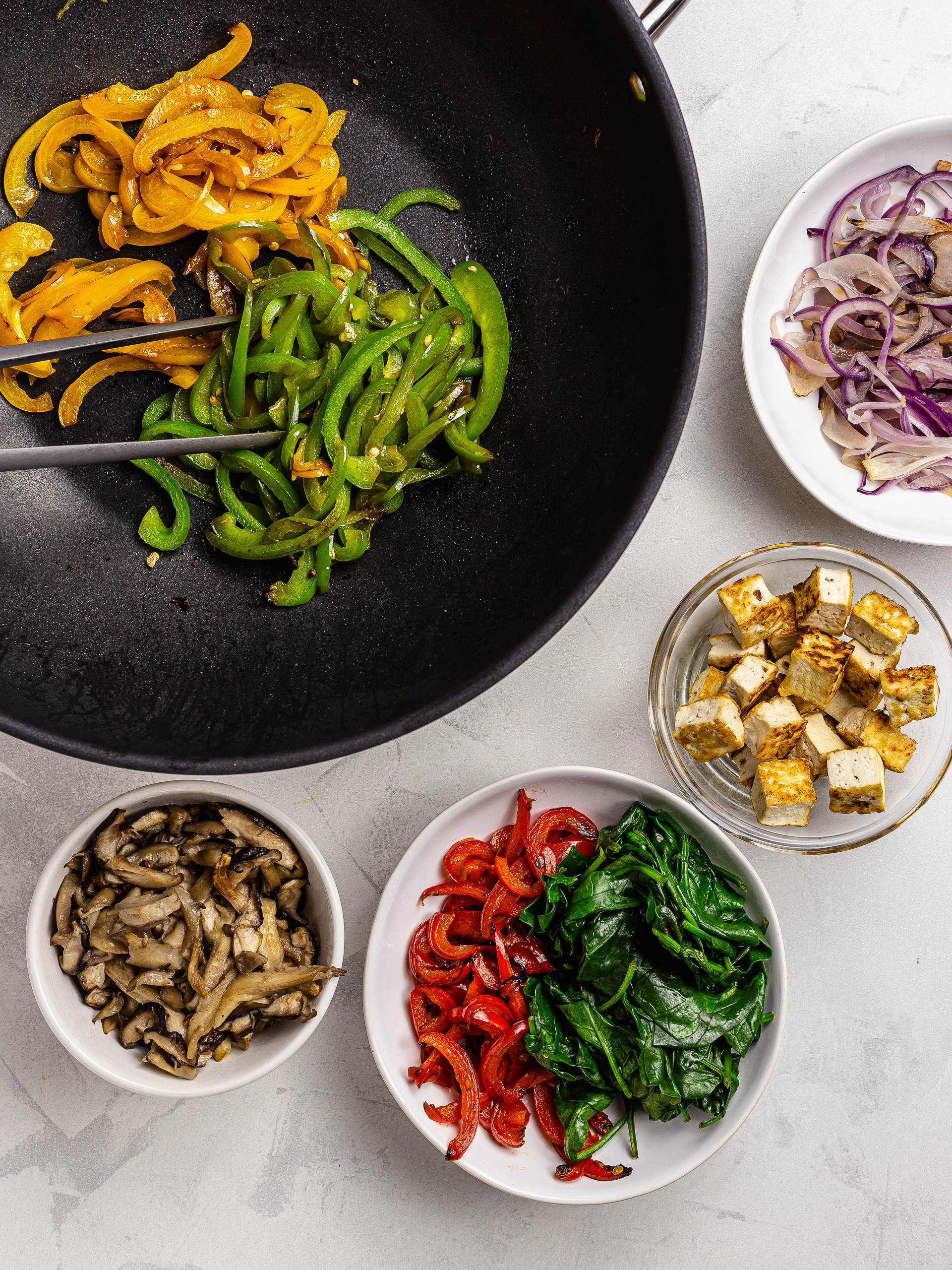
Step 3
Set the stir-fried ingredients aside and transfer the soaked noodles into the wok.
Cook them for 5 minutes or until they soften.
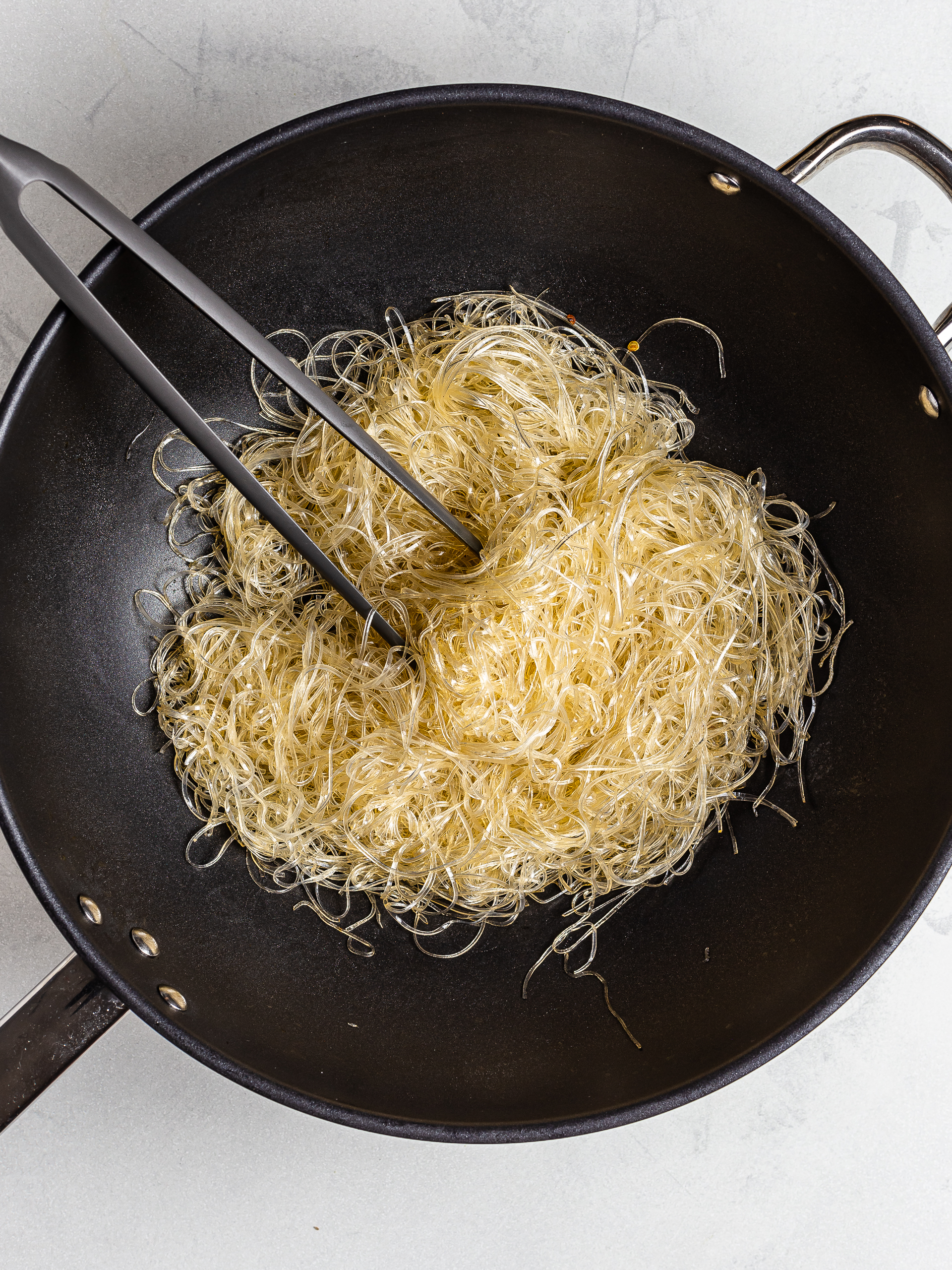
Step 4
Now, transfer the veggies and tofu back into the wok and tip the soy sauce, maple, sesame oil, and rice vinegar.
Season with salt and black pepper and stir-fry all for a 5 more minutes.
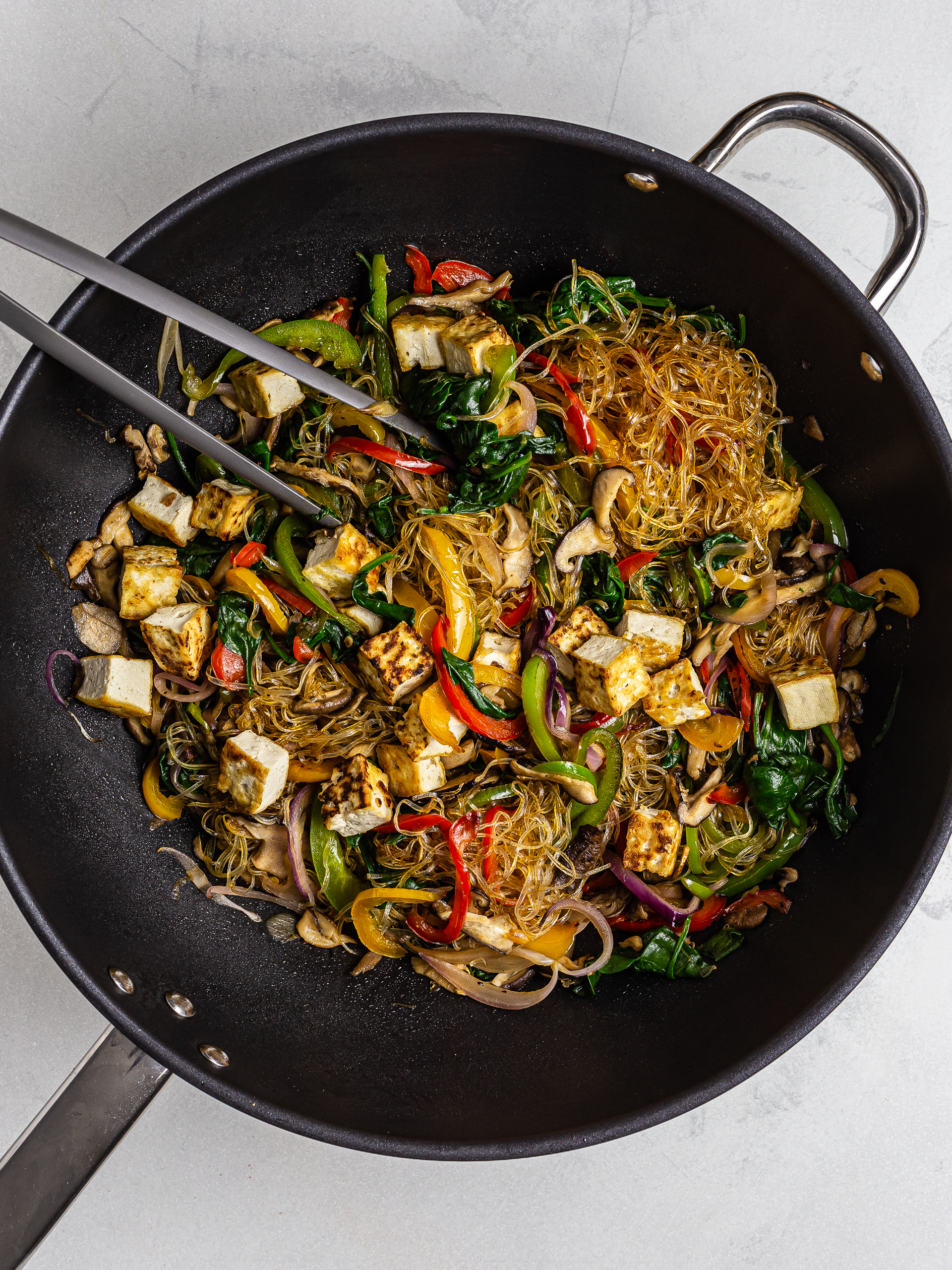
Step 5
Finally, divide the japchae noodles among serving bowls and sprinkle them with chilli flakes and sesame seeds.
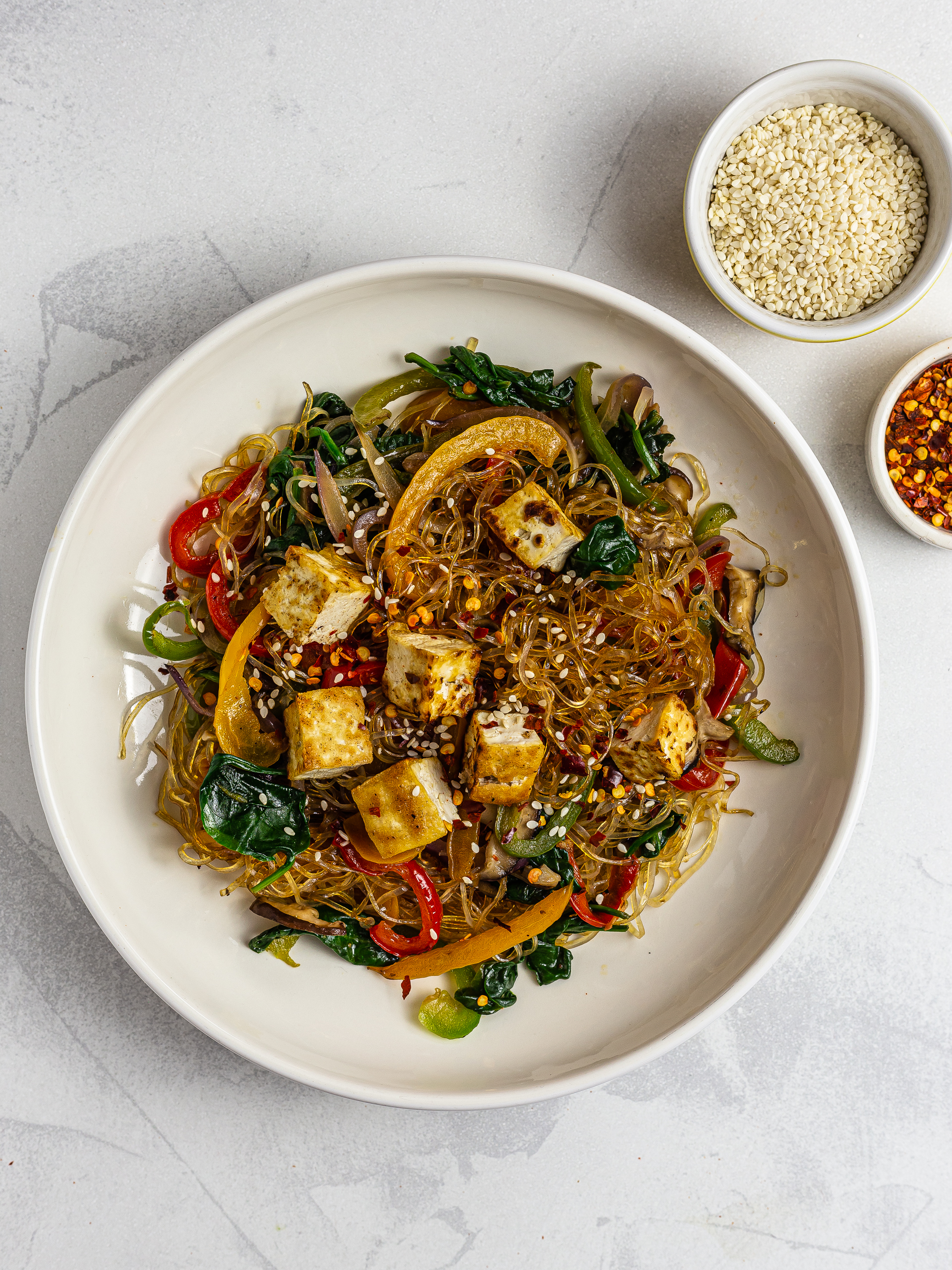
Tips
You can marinate the tofu cubes in a bowl with 1 tbsp of soy sauce, 1 tbsp of vinegar, 1 tsp of maple, and 1 tsp of chilli flakes. Leave them to soak for 5-10 minutes and then stir-fry them in the wok following our recipe above.
Or try one of our other tofu seasoning ideas like this firecracker sauce-coated tofu, miso-marinated tofu, or garlic honey-glazed tofu.
Add shredded seaweed nori sheets ("gim" or "kim" in Korean) to the stir-fry to get extra nutrients and a deeper flavour.
You can find glass noodles also under the name of clear noodles, bean thread noodles, or cellophane noodles. They can be made from sweet potato starch, mung bean starch, tapioca, or arrowroot starch.
If you can't eat soy, replace soy sauce with coconut amino sauce or a mixture of balsamic vinegar and rice vinegar. Also, swap tofu cubes with other meat-free alternatives like seitan or Quorn, or use canned beans like adzuki or mung beans.
